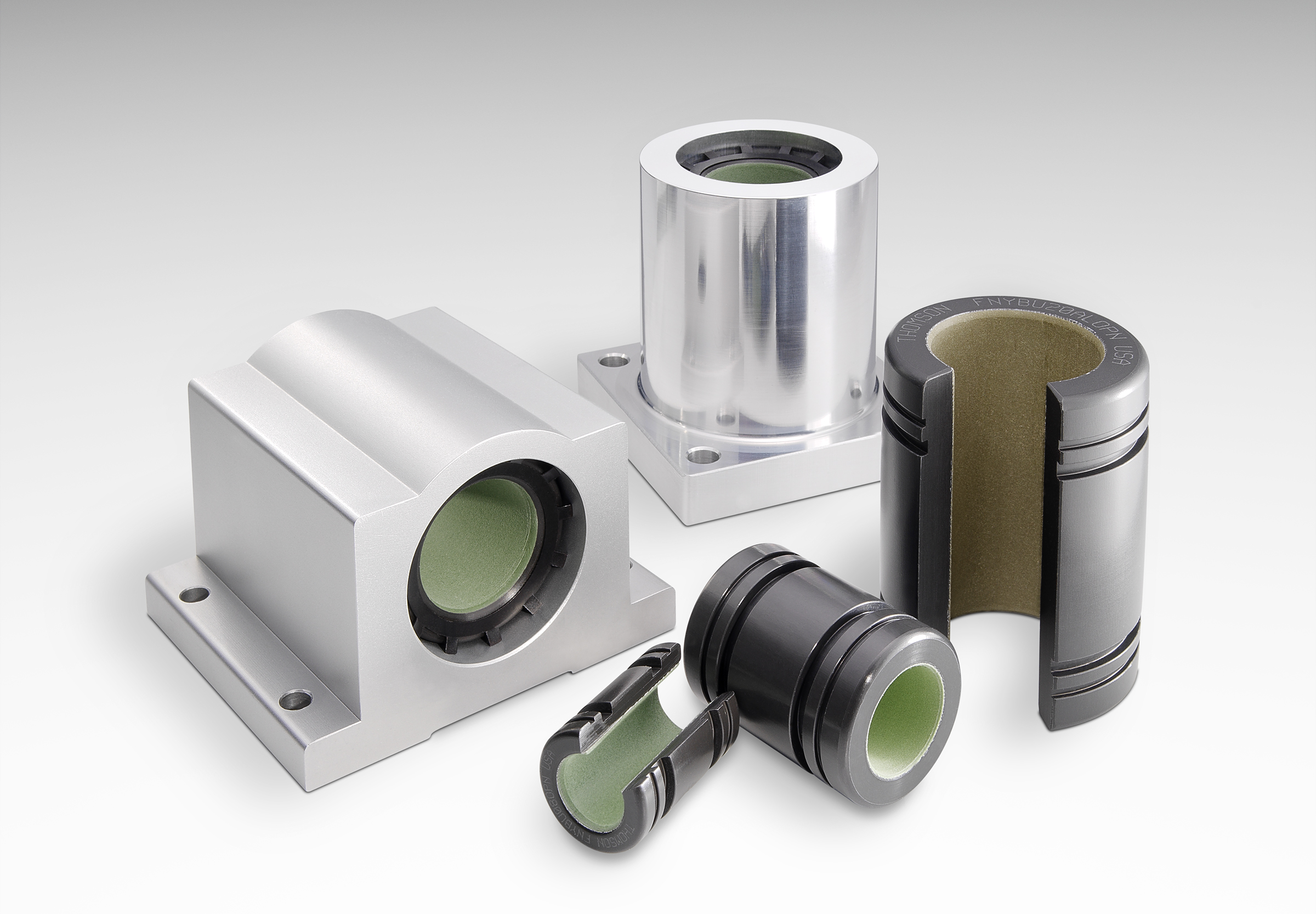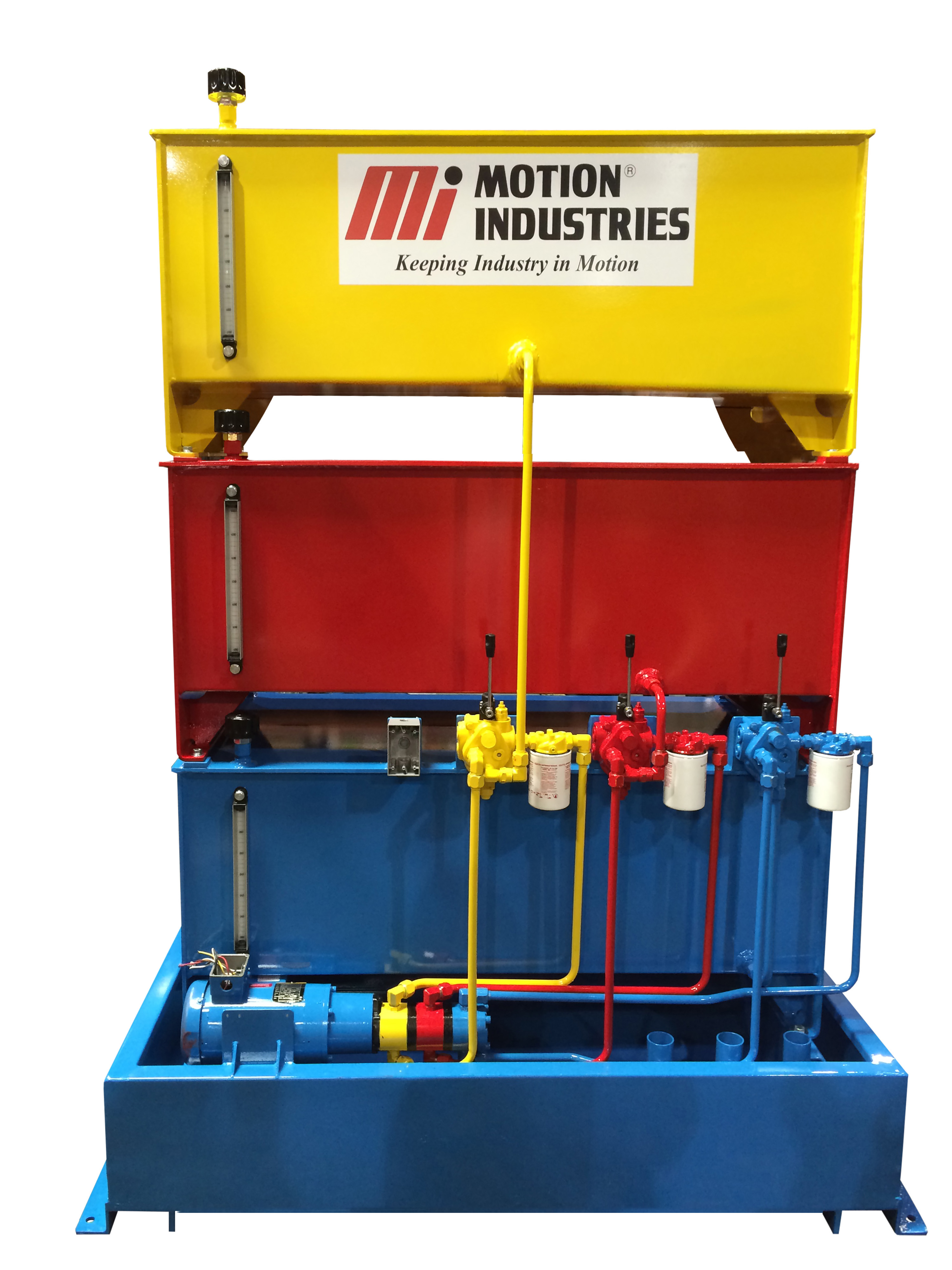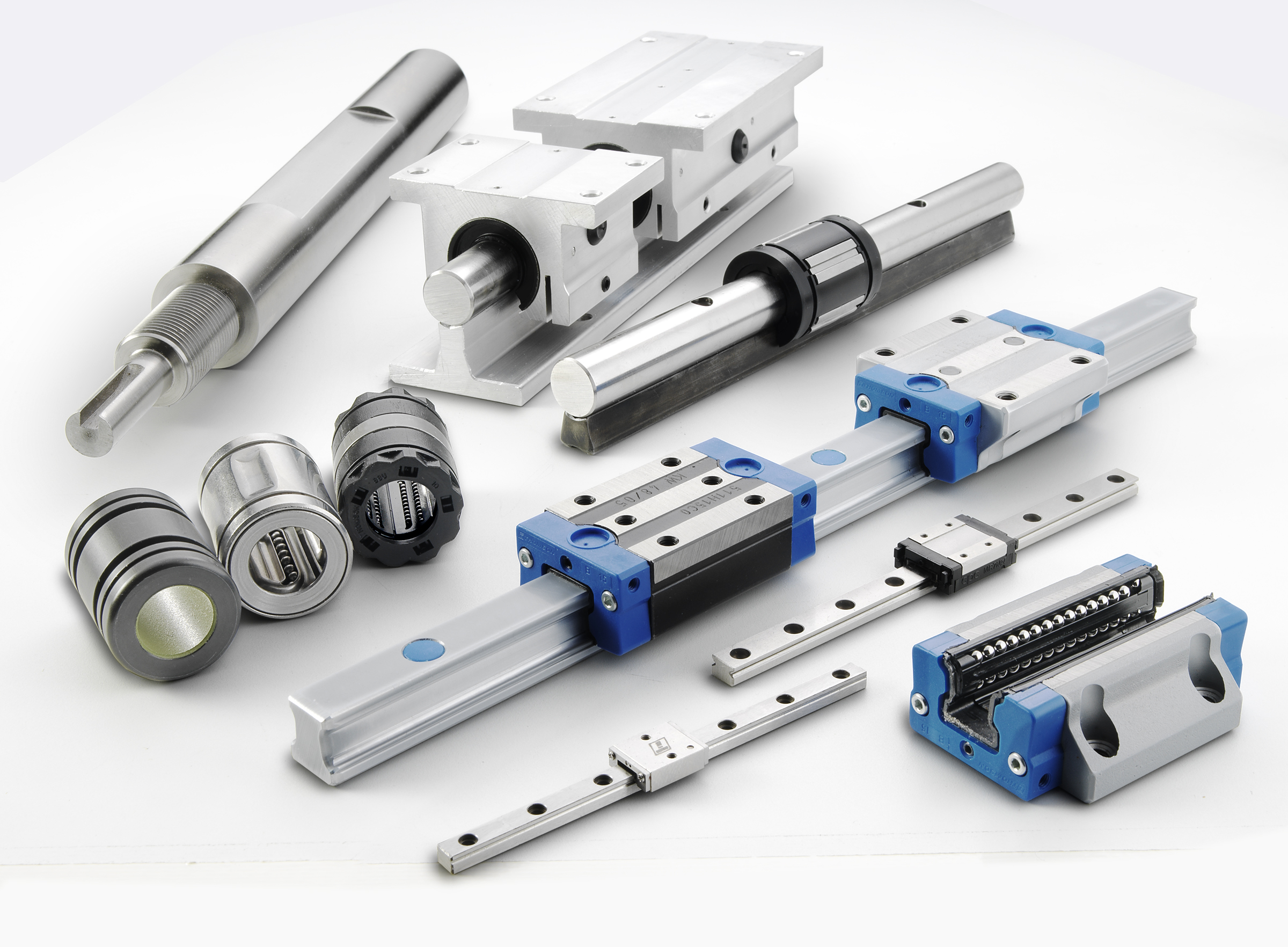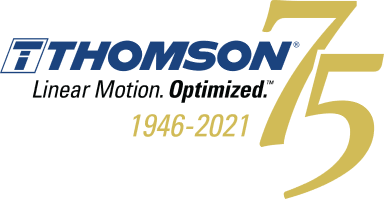Four linear bearing and guide lubrication mistakes that can bring your machines down
For most manufacturers, the financial cost of machine downtime can be significant, resulting in the loss of thousands or even millions of dollars. Small investments in routine and preventive maintenance, however, can pay off many times over.
In linear motion applications, for example, bearings and guides require proper lubrication to ensure they operate efficiently. A lack of investment in a lubrication management program can contribute towards maintenance costs and downtime. To help you establish this type of program and steer clear of premature machine failure, here are four common lubrication mistakes and strategies for avoiding them.
1. Misapplication of lubricant type
Identifying the right type of lubricant for any given application can be difficult. Notwithstanding the application and mechanical considerations, one must also wade through the wide variety of available lubricant options. New and changing additive packages makes this exercise all the more challenging.
For linear bearing and guide applications, selecting the right lubricant at the outset is critical. Using the wrong type of lubricant for an application can shorten operating life (best case) or cause catastrophic failure (worst case).
As you sift through the wide variety of options that exist, remain diligent in consulting with the machine designer and your lubrication supplier/specialist to identify the right product for your application. Doing this research upfront may seem daunting, but will reap great benefits by extending the life of your machine.
A few general guidelines that will help you select from the available options include:
• Light loads and high speeds do well with machine oil or low viscosity grease.
• Medium loads and speeds do well with NLGI 1 or 2 grease.
• High loads may require a grease with an EP2 additive. The EP is Extreme Pressure and uses special additives to prevent the grease from breaking down under high pressures. This type of grease will give the steel shafts a dull appearance. [1]
Other additive types that you might come across are:
• Antioxidants, which add protection during storage and extend life at increased temperatures.
• Rust and corrosion inhibitors, which protect metal oxidation in water and stop the grease from attacking metals.
• Tackifiers/polymers, which allow for better adhesion to metal surfaces by providing water resistance.
• Solid lubricants such as Moly, Polytetrafluoroethylene (PTFE), and graphite, which provide protection and friction reduction during boundary lubrication conditions.
Linear slide tables should be lubricated per the manual; using a different grease than what was supplied at the factory can cause the grease to degrade. Do not use any type of dry lubricant (PTFE powder, graphite powder, etc.) with any recirculating ball or roller type of bearing. While these lubricants are good for sliding motion, they do very little to aid rolling friction. [1]
Selecting the appropriate lubrication for the application has a direct influence on the performance and life of linear bearing and guides. (Image courtesy of Thomson Industries, Inc.)
Once machine designers have considered these factors, they are faced with the decision between selecting oil or grease for bearing lubrication. In general, the heavier the lubricant, the greater the protection against contamination, which means grease would tend to provide more protection than oil. However, this must be balanced against the other application criteria. For applications subject to dust, fumes or other contamination, grease should always get first consideration. Grease can maintain consistency over longer periods of time, making it better than oil when extended operation with minimal maintenance is required.
However, at high speeds or temperatures, grease does not perform as well as oil. Oil viscosity typically decreases rapidly as operating temperatures increase. There are at least four common viscosity values measured at temperatures ranging from 38-100oC (100-212°F). The challenge is to select the one that will provide a minimum acceptable viscosity at the bearing’s operating temperature. There should be enough viscosity to form fluid films at the prevailing shear rates, but not so much that it causes excessive friction loss. As grease tends to be too viscous for centralized lubrication systems, the regularity of the maintenance may outweigh the value of the contamination protection that the grease would provide.
As cross-contamination of incompatible grease types can have severe ramifications, it is critical for machine designers to select the right lubrication type.
2. Failure to perform regular preventive maintenance
Contrary to conventional wisdom, waiting for machine components to break before fixing it is not good practice. Unscheduled downtime means lost productivity. A structured lubrication schedule can prevent this, both by extending bearing life and driving strategic replacement programs. A comprehensive lubrication plan combines manual and visual inspection, condition monitoring, and self-lubricating bearings.
Manual and visual inspection of lubrication is the first line of defense against downtime. It begins with a visual check of the raceway and shafts to see if there is a consistent, thin film of lubrication throughout or if there is more lubrication than necessary. Maintenance staff may also gauge the adequacy of the lubrication by gliding a finger across the bearing shaft to identify the presence of lubrication. It should feel slick to the touch but not dripping. [1] This quick manual check can also reveal the presence of metal particles, which indicates excessive wear.
The effectiveness of manual and visual inspection depends on the experience, training and judgment of the maintenance personnel in determining how much lubrication is right for different travel requirements, loads and environmental conditions. What is most important here, however, is that the observation is not random but scheduled at set intervals. During inspections, maintenance teams might also detect signs of wear, like excessive noise or increased vibration.
As the costs of instrumentation and connectivity come down, the inspection process is increasingly automated. Optical sensors can detect the presence or absence of lubrication and trigger alarms if not adequate for the existing load and travel distance. Sensors can detect the slightest increase in friction or vibration as a result of inadequate lubrication or wear.
In many types of applications, there is increased use of self-lubricating bearings. These will store lubrication in an internal reservoir and deposit, or remove, lubrication as necessary. This is ideal for installations that are difficult or unsafe to access for routine maintenance. In some cases, the reservoir can be refilled to last the life of the bearing. Other factors can impact bearing life as well, so even for companies using self-lubricating bearings, creating and adhering to a routine inspection schedule is still necessary.

For some applications, including those that are difficult or unsafe to access for routine maintenance or placed in highly contaminated environments, self-lubricating bearings are ideal. (Image courtesy of Thomson Industries, Inc.)
A proper preventive maintanenance program will also detect contamination of bearings and guides. Selecting the right lubrication can protect against contamination by preventing the ingress of foreign materials. Machine designers can also implement appropriate built-in features in their design to help protect against any risks of contamination. For example, an effective, yet space-consuming, protective feature is a bellows design. Bellows can be specified to cover the entire system, making contamination impossible unless the folds of the bellows are breached. For many applications, wipers, which clean bearing shafts continually, and scrapers, which provide a similar function for heavier types of debris, also provide cost-effective contamination protection.
3. Violating lubrication storage and management protocols
Lubrication storage and clean transfer is the most critical component to a successful lubrication management protocol. This is why setting up such a protocol merits great investments in time, effort and money. Color-coded tagging of containment and transfer equipment represents clean storage. Positioned throughout a facility, this serves as a daily, visual reminder of that facility’s commitment to the program. It serves also to cultivate amongst staff a culture that values good maintenance practices.
A compounding and widespread misconception that leads to premature failure is that new oil is clean. The reality is that it will meet only a bare minimum level of cleanliness. This level, typically provided in the ISO format, should be evaluated against the requirements for the linear bearings and guides to which it will be applied. After this review, most facilities will undoubtedly realize that new oil is not clean — at least not clean enough. The best way to combat this is to always transfer through filtration from barrel to bulk storage, from bulk storage to temporary containers, and from temporary containers to the equipment being serviced.
Machine designers should focus on the following areas: 
• Install or store lubricants, bulk storage tanks and transfer equipment in one clean area, preferably one with environmental controls that can minimize the egress of airborne contaminants, stabilize temperature variations and control humidity. Locating this area in a location central to the facility, ideally near a storeroom or maintenance shop, will also provide labor savings by enabling a more efficient workflow.
• Color code everything; storage tanks, transfer equipment and the equipment onto which you will be depositing the lubricant. A great example would be having a yellow grease gun, yellow outlined pegboard and a yellow tag showing the grease name and type hanging on all the equipment that it services. Color coding your lubricant distribution allows for an easy-to-use and intuitive system. This may seem like a daunting task, but there are many readymade labeling solutions that can be quickly and easily ordered/installed.
In the final stages of production before shipping to a mining operation, this custom-designed fluid containment system demonstrates the color coordination that enables the end user to identify and segregate each fluid to avoid any possibility of cross-contamination. (Image courtesy Motion Industries)
• Invest in high-quality equipment. Maintenance personnel are more likely to buy into the program if they see that the facility has made a considerable investment. In addition, buying premium components will save a facility significant money over time.
• Use quality filtration and closed transfer points, which are protected from oil and air. Filtration and breathers, preferably desiccant style, pay for themselves and ensure fluid integrity when it is most vulnerable. Closed transfer points, using fluid quick couplers, ensure clean transfer while further minimizing the potential for human error.
Focusing on these preventive measures will go a long way towards extending the life of your machine, saving money for reinvestment, and fostering a culture that values the policies and procedures your facility has set out.
4. Inadequate training
Often overlooked during the capital investment process is the training of people who will be using and maintaining the linear bearings and guides being purchased. This oversight can lead to issues during startup or even persist throughout the life of the machine being purchased.This is particularly true for pieces of equipment that rely on linear bearings and guides. Most maintenance staff are not as familiar or comfortable with the maintenance of linear bearings. Failure to invest in appropriate training will lead to neglect or improper maintenance reducing the operating life of the machine.

No matter the type of linear bearings and guides specified for your machines, proper training on lubrication and a lubrication management system is imperative for effective maintenance. (Image courtesy of Thomson Industries, Inc.)
At the heart of a facility’s maintenance program should be a robust lubrication management system, which relies heavily upon education and continuous improvement. Investing time in this style of accreditation and training will save your facility both time and money, and will ensure that your staff is properly educated and armed with the tools they need to maintain the machine that they are servicing.
Several good training courses and accreditations currently exist and are readily available for facilitators to implement for maintenance staff. The International Council for Machinery Lubrication (ICML), a vendor-neutral, not-for-profit organization, offers a handful of well-regarded courses.
Understanding the primary causes of machine failure and how to avoid them is of great value for machine designers as well as end-user maintenance teams. Furthermore, understanding the role of lubrication and its characteristics applied to linear bearings and guides is critical. If a proper preventive program is followed, end-users can benefit from reduced lifecycle costs and extended life of high-precision linear motion technology. Meanwhile, designers can optimize their machine’s performance and ROI through its intended lifecycle.
Bibliography
[1] T. Linear, "Thomsonlinear.com," Thomson Linear, 08 08 2019. [Online]. Available: https://www.thomsonlinear.com/en/support/tips/what-should-be-used-to-lubricate-linear-bearings. [Accessed 08 08 2018].
[2] ICML, "icmlonline.com," ICML, 08 08 2019. [Online]. Available: https://icmlonline.com/about_us.aspx. [Accessed 08 08 2019].
[Bios] Charles Isaac is Global Product Line Manager, Linear Bearings and Guides for Thomson Industries. He is responsible for the short- and long-term strategic direction of the linear bearings and guides business, including the product roadmap. He earned his BS in Manufacturing Engineering from Fairmont State University and an MBA from Walden University. Charles has been with Thomson Linear for one year.
Based out of Calgary, Ian Miller E.I.T. is National Services Business Development Manager of Motion Canada. He has over a decade of hydraulic and electrical experience in the field including system design, trouble-shooting, on-site installations, and technical training/support. To find out more, visit MotionIndustries.com/machinedesign, or MiHow2.com for short, instructional videos.

